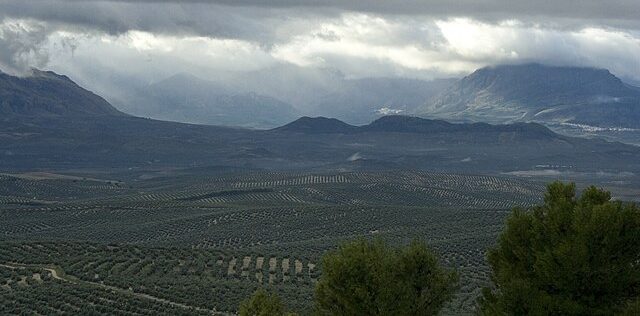Farmers on the West Bank produced $184 million of lucrative olive oil in the October 2024 harvest despite the war cloud.
According to the Ministry of Agriculture of Palestine, the olive oil volume hit 27,300 kilo-liters (KL) against an expectation of 18,000 Kl.
This surprise rally owes to farm input by 200,000 Palestinian workers whom Israel expelled at the start of the war in 2023.
Expulsion of the workers after October 7, 2023 coincided with the annual olive harvest on contested land west of River Jordan.
Poor 2023 Olive Harvest
The 2023 crop was not so lucky for farm restrictions saw farmers lack access to 96,000 dunums (24,000 acres).
A further denial of access to 35,000 dunums (8,500 acres) of olive orchards on the West Bank visited upon the sector in 2024. The Ministry of Agriculture puts this acreage as equal to 1,365 kiloliters of lost olive oil, worth $8.5 million in value.
In the 15 months of the war till the ceasefire of early 2025, some 52,300 olive trees had disappeared from sabotage. This effectively reduced the olive grove population by 4%.
Olives Dear to Palestine and Israel
Olive production in the restive neighbors are a part of their dietary and economic lives, with Palestine almost wholly dependent on it.
Palestine produces average 134,000 tonnes of raw olives, which in turn generate an average 16,500 kiloliters of olive oil.
For Israel, olives at 19,000 tonnes average annual production fuel the country’s love affair with the Mediterranean diet.
Almost all 9,000 kiloliters of olive oil that Israel produces in a good season ends up in the local diet. The sector represents a significant 1.02% of the country’s total agricultural harvest, as of 2010.
Many Palestinians used to work in olive orchards in Israel in 2010, but since 2023 the number has drastically reduced.
With such stakes, it is clear that the rally in West Bank olive oil output in 2024 is commendable. To learn more on the olive sector in the Middle-east country, read on next.
West Bank and Palestine Olive Production
Olive and olive oil production in Palestine is a lifeline for some 100,000 families, as of 2007. Olives grow on 65,922 hectares or 45-53% of national farmland, as of 2022, according to FAOSTAT. This livelihood is often unstable because production oscillates depending on the reigning regional political happenings. However, the average production of table olives in a peaceful year is in the 130,000-tonne margin, such as the 139,500 tonnes of 2022. In a war-torn year, when farmers cannot access farms, it falls to 110,771 tonnes, as in 2023.
Olive oil production in its part fares worse in war time because not only is olive supply low but factories lack resources. In 2022, Palestine managed 36,000 kiloliters but in hostile 2024, production on the West Bank alone was down to 27,300 kiloliters.
How strategic is the West Bank in olive production?
The West Bank refers to settlements such as Bethlehem and Jericho west of River Jordan, formerly a part of Jordan. It is now predominantly Palestinian, albeit with some Israeli settlers. According to the United Nations, the West Bank and the Gaza Strip together contain 80% olive orchards in their total farmland. In comparison, 45% of the total land in the entire Palestine is under olive groves, as of 2007. Some 93% of the harvest in both West Bank and larger Palestine ends up in the production of olive oil. In 2007, olive production accounted for 18% of the regional economy of the West Bank.
